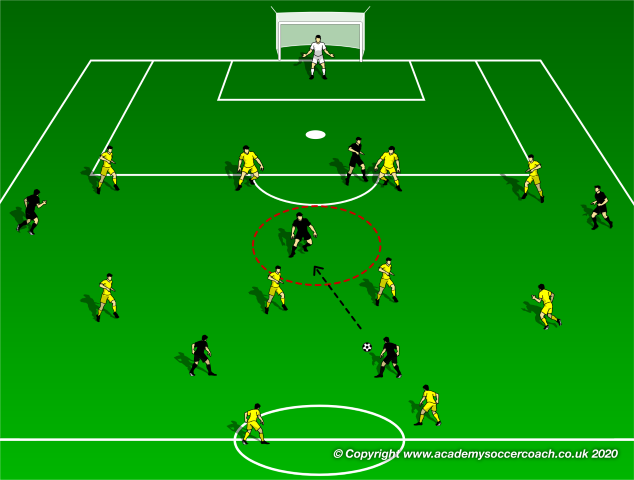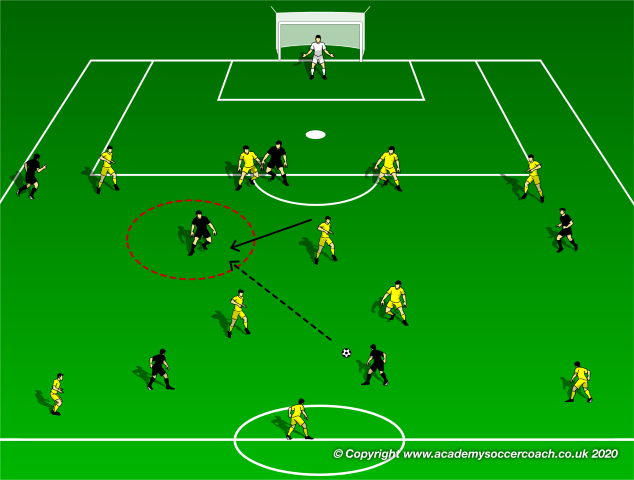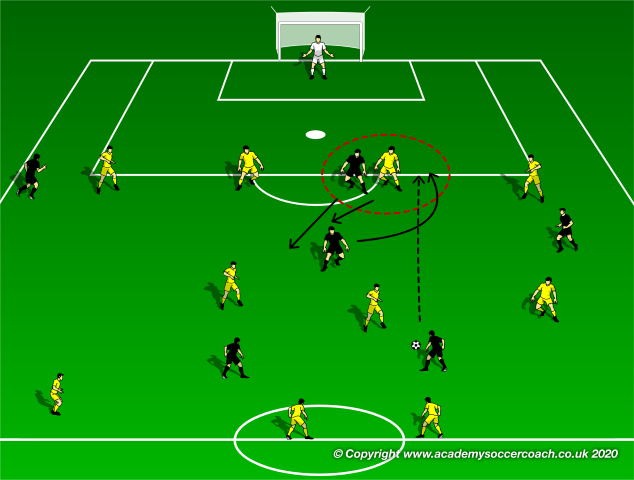By Dan Severn
Being successful in an attacking midfield role requires the player to be intelligent off-the-ball. They need to have great awareness and timing of movement in order to find spaces at good times to receive the ball. If they manage to combine the timing with the movement, it can lead to opportunities to dribble at defenders, play through balls or even take on long shots. The “number 10” is often given a lot of freedom to roam in order to find dangerous spaces to get on the ball and many attacking midfielders share similar ideas of what these dangerous spaces look like.
First of all, we will take a look at an attacking midfielder looking to receive the ball “between-lines”. In this case, between the opposing midfielder and defenders. This of course will vary depending on the opposing teams’ formation. If they are playing with a pair of central midfielders (i.e., in an old-school 4-4-2, or in a modern 3-4-3), then that space could be very central (as shown in the left image). If the opponents have a defensive midfielder (as part of a 4-3-3 or a 4-4-2 diamond), then the 10 may need to drift off on angles instead – this will either drag the opposing defensive midfielder away from their position, or find space to receive the ball and drive at an isolated central defender (shown in the second image).


The attacking midfielder can also be very dangerous by making runs “in behind”. This allows the central striker (#9), to add more variation to their own play. In the instance shown, we see the striker dropping into the space the attacking midfielder would typically be looking to find. As the striker drops-in, the central defender will often follow, not wanting to allow them space and time to receive the ball. Our attacking midfielder then makes a dynamic run into the space left by the central defender to receive a through ball. Note the start position, the attacking midfielder found themselves on the blind-side of an opponent when the striker dropped in, meaning the opponent couldn’t see them and the ball at the same time and therefore won’t have seen the run when it started.

Dan Severn has over 16 years coaching experience in both the USA and England. He has the United Soccer Coaches Premier Diploma and has taken courses with the Deutscher Futball-Bund (DFB).


